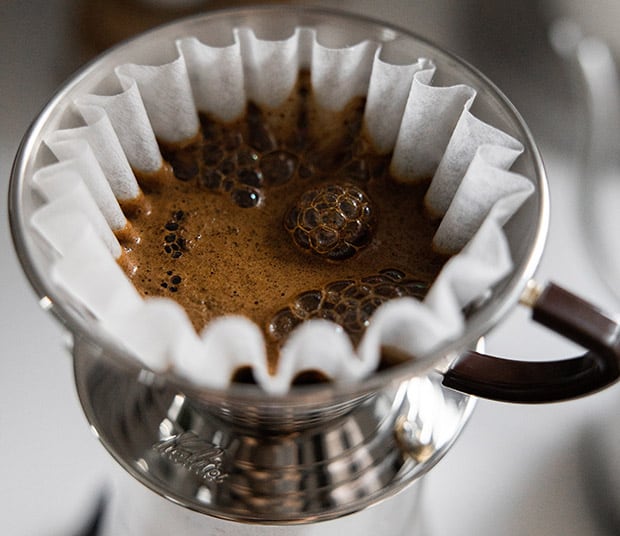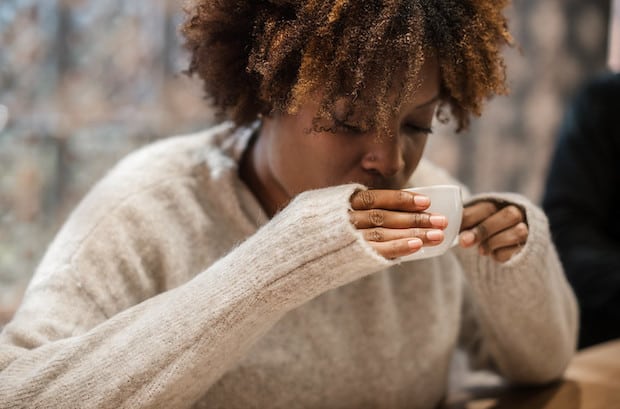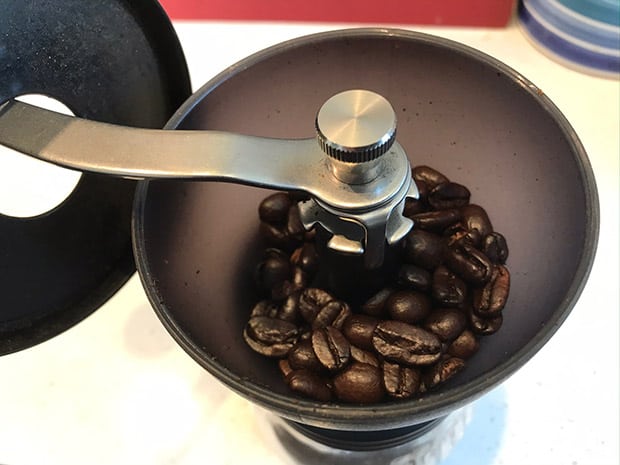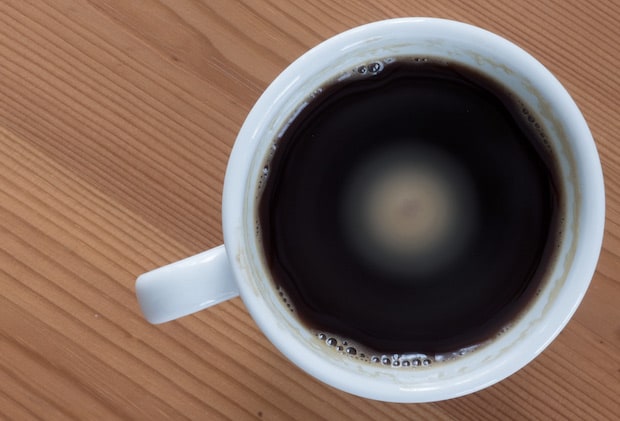Last Updated on December 9, 2023
Extraction is the process at the foundation of making coffee.
Over-extracted coffee doesn’t taste right. Neither does under-extracted coffee.
If coffee extraction is this important, you’re going to want to know more about it. That’s what we’re here for.
What is extraction?
Extraction is the chemical process that happens after you mix coffee grounds and water together, when the hot (or sometimes cold) water begins to pull flavor compounds, acids and oils out from the coffee itself. As the water extracts these elements from the coffee grounds, they dissolve in the water and create what you know as coffee.

Whatever the water is able to draw out of the beans is know in scientific terms as the extraction yield.
Extraction is one of the most—if not the most—important elements of making coffee. Without it, you’d just have coffee grounds and water. It is core to your brewing method, but it’s not often discussed by every day home coffee brewers.
How does coffee extraction work?
The rate at which various compounds are extracted from the coffee grounds will differ. There are a lot of different components to an extraction yield. Fats and acids are extracted and dissolved quite quickly, followed by sugar. Fibers take a little longer. The slowest to come out are the tannins, which add important bitterness to your coffee’s flavor profile, but too much of them will cause your coffee to taste bitter. Which brings us to the main point of this article.
Signs that your coffee is over-extracted
Over-extracted coffee is the result of drawing too much out of the coffee grounds. A well-balanced extraction yield gives coffee a full and robust flavor profile. It smells amazing, with the right amount of acidity and just a touch of that bitterness, indicating that your brewing method is spot on. But over-extracted coffee will go well past this balance.
1. Bitterness
Over-extracted coffee will taste overpoweringly bitter. Some bitterness is good of course, like the bitterness that comes with dark chocolate. But this kind of bitterness is less an element of your coffee’s flavor profile and more overpowering; it will dominate your drink in an unpleasant way.

2. Dullness
On the other hand, your drink might taste less robust, like your coffee is only 50 per cent of what it should be. This is because at this point, the water has extracted all the fats, acids, and sugars and begun breaking down the plant fibers within the coffee beans.
Old or stale coffee beans can sometimes taste this way because they’ve been out for so long, but if you’re working with a fresh batch of beans and this still happens, then the likely culprit is over-extraction.
3. Astringency
Sometimes you take a sip and get a dry mouthfeel, even though you’ve just taken down some moisture. People compare this feeling to what you sometimes get from drinking very dry or cheap wine.

This astringency is also a sign that your coffee is over-extracted, because it means that the extraction process has pulled out the micro-nutrients in the plant fibers. These are called polyphenols. Not only do they taste bitter, but they can also bind to proteins in your saliva and soak up the natural lubricants in your mouth, leaving you with that dry feeling.
Signs that your coffee is under-extracted
At the opposite end of the spectrum is under-extraction. I mentioned earlier that you want to find a perfect balance when brewing coffee: neither under or over. Because people want to avoid over-extracting their coffee, they sometimes go too far the other way and end up with under-extracted coffee.
Knowing the difference in taste will help you get closer to where you want to be with your morning brew. There are also a couple easy ways you can tell that coffee is under-extracted.
1. Sourness
Acids are among the first compounds drawn out of coffee grounds, so acidity will be the first quality you’ll notice if you’ve under-extracted your coffee. Acidity in coffee isn’t a bad thing—a good and well-balanced cup of coffee will have notes of acid to make the coffee more bright and complex. But straight-up sourness is unchecked acidity. Like the bitterness of over-extraction, this sourness will be very much in your face, the kind that you’ll instinctively make a face at (just the thought of sour coffee is making my mouth pucker).
2. Thinness
Coffee extraction is a process that takes time. If you fall short of the ideal extraction point, you will not have pulled all the flavors from your coffee grounds and your coffee will taste incomplete. Unlike the dull flavor you get by over-extracting, this is more like a lack of flavor—like your coffee is underdeveloped.
Think about an apple ripening on the branch. You want to pick it when it’s perfectly ripe. If you eat it before, then the fruit will not have had time to fully form and develop. If you eat it after, then it will have been in the sun for too long and start losing some of the zing that makes it a great apple.
3. Saltiness
This may be a difficult taste to pin down, but you can get salty coffee! This is particularly true for espresso. Under-extraction means you haven’t had enough time to pull the sugars and other flavors from the coffee grounds, so you can might get a little salty flavor through the sourness.
If you taste this in your coffee you might think you’ve accidentally mixed in salt instead of sugar (or maybe forgot to wash your mug properly), but the culprit is probably under-extraction.
Things that affect coffee extraction
Hopefully you can now begin to identify whether you’ve over- or under-extracted your coffee. We know that finding balance is the key to getting the perfect cup of coffee, but it doesn’t have to be all blind trial and error! You can key in on a few variables to get to the taste you want. Here are a few that you should know about:
- Brew time: This is the amount of time the water and coffee spend in direct contact with each other. The longer you brew your coffee, the more the water will extract from the grounds.
- Water temperature: The hotter the water, the more quickly extraction occurs. Heat speeds up chemical reactions as the water and the coffee grounds come together.
- Grind size: The finer you grind your coffee, the faster the water will be able to pull things out. The water doesn’t have to go as deep into the coffee granule to pull out its compounds.
View this post on Instagram
How to control extraction
Based on these three important factors, here’s how to control the extraction process in your brewing method to get that perfect cup of coffee:
- Brew time: If you’re making espresso, the grounds are small and you’re using a small volume of water. Only about 20-30 seconds are needed to brew. On the other hand, if you’re making regular black coffee, then two to five minutes is the target range.
- Water temperature: The ideal water temperature is going to be between 195 and 205 degrees Fahrenheit.
- Grind size: With a blade grinder, you just grind longer. However, blade grinders are notorious for giving you an inconsistent grind size—some big granules, some small. We recommend investing in a proper burr grinder that produces a uniform grind size according to whatever settings you specify.

As you become more experienced, you’ll also want to experiment with the brewing ratio, which is ratio of coffee grounds to water. Most people eyeball it and end up somewhere between one and two tablespoons of coffee grounds per six ounces of water. Others will go right up to two tablespoons for a fuller taste. Some coffee lovers even weigh out their beans and water to get a precise ratio of 1:17, but that is more difficult to measure so if you’re not fussy, you can leave that to the experts.
Hopefully these tips will help you get closer to your ideal cup of coffee. As always, remember that it’s about finding the right balance for you, and not necessarily what experts or research says is the right way to go. If you prefer a little extra bitterness in your coffee, try adjusting your brewing method to see if you can get it, knowing what you now know about over-extracted coffee.
Happy brewing!


